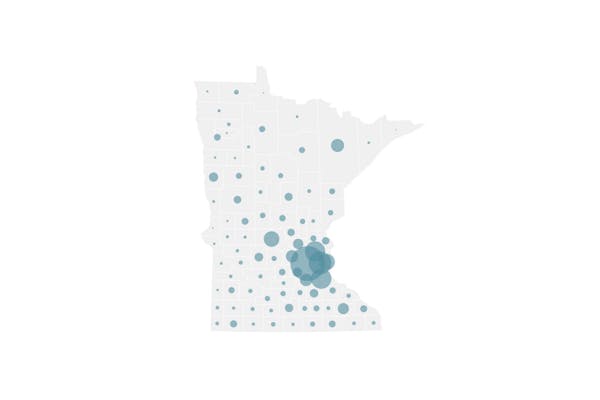Encouraging vaccine news and a dip in COVID-19 numbers in Minnesota suggest a "light at the end of the tunnel" for the pandemic, but public health officials said people must remain diligent about mask-wearing and social distancing to keep the state on track.
The positivity rate of diagnostic testing for COVID-19 has declined from 15.6% on Nov. 10 to 11.2% on Nov. 22, which could indicate a slowing of viral activity in Minnesota. The likely spread of the coronavirus that causes COVID-19 over Thanksgiving could upend that progress, though.
"We're in a bit of a tenuous time," said Kris Ehresmann, state infectious disease director. "We've just come off of a lot of testing prior to the holiday — people who were hoping to get tested and use that as a justification to go forward with plans. We know that testing volume decreased the week of the holiday, and so there just has been a lot of variability. I'm really reluctant to draw too many conclusions at this point, because it's really been a very unusual week."
The Minnesota Department of Health on Tuesday reported another 22 deaths and 3,570 lab-confirmed infections — bringing the state's totals in the pandemic to 3,615 deaths and 322,312 infections.
A lower reported infection count is typical on Tuesdays, because of less testing and diagnostic activity on weekends, but also could be caused by a dip in the latest COVID-19 wave. Regardless, hospitals continued to face pressure.
A record 394 Minnesota hospital intensive care beds were filled with COVID-19 patients, according to Tuesday's update of the state pandemic response dashboard, while only 681 are filled with patients who have other medical conditions. Hospitals have delayed non-urgent surgeries to free up beds during the pandemic surge, which is partly why 37% of ICU patients have COVID-19.
"We do continue to see still alarming rates of case growth and, most importantly, serious resulting illness as COVID patients are taking up an ever-increasing percentage of our available hospital beds," state Health Commissioner Jan Malcolm said.
Border states that had the nation's highest COVID-19 case rates are starting to see declines, according to the COVID Exit Strategy website — potentially forecasting the direction of the pandemic for Minnesota. The Dakotas for weeks had the nation's highest new infection rates, but now their rates are comparable to Minnesota's rate. Wisconsin's new infection rate has fallen sharply as well.
Minnesota is now in week two of a four-week order by Gov. Tim Walz that sought to reduce viral transmission by closing bars and restaurants and limiting social gatherings to immediate household members. Walz has said that he assesses Minnesota's response to the pandemic by the test positivity rate, which is improving, and the rate of infections from unknown community sources, which is worsening.
The share of positive infections from unknown community sources has increased from 33.1% on Nov. 10 to a record high 37.3% on Nov. 22.
Ehresmann said contact tracers are struggling to keep pace with the surge in infections, and that could result in fewer being linked to identifiable sources.
However, increased viral spread also makes it likely that individual infections could be linked to multiple sources, which is a further warning that the COVID-19 wave is not over.
"Early in the pandemic there were so few cases that, man, if someone was a case, it was so much easier to draw that circle around them and identify potential contacts," she said. "Now, there are so many cases that it's becoming more difficult, so the likelihood of having more unidentified community spread is much greater."
Jeremy Olson • 612-673-7744
One killed in head-on crash in Coon Rapids

Edina could see first zoning update in 50 years

Will this be the year legislators abolish "shotgun only'' for deer across southern Minnesota?

